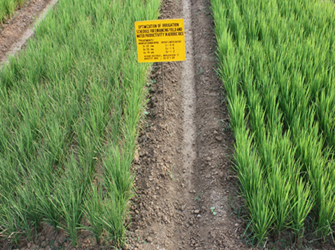Aerobic rice can be found, or can be a suitable technology, in the following areas:
Favorable uplands: These are areas where the land is flat, and where rainfall with or without supplemental irrigation is sufficient to frequently bring the soil water content close to field capacity, and where farmers have access to external inputs such as fertilizers. Fields on upper slopes or terraces in undulating,rainfed lowlands: quite often, soils in these areas are relatively coarse-textured and well-drained, so that ponding of water occurs only briefly or not at all during the growing season. -
Water-short irrigated lowlands: These are areas where farmers do not have access to sufficient water anymore to keep rice fields flooded for a substantial period of time.
- Soil-borne pests and diseases such as nematodes, root aphids, and fungi are known to occur more in aerobic rice than in flooded rice, especially in the tropics.
- It is recommended to grow aerobic rice in rotation with upland crops suitable in that area.
 Establishment under Aerobic Rice
Establishment under Aerobic Rice
Varieties :
Suitable Variety – Anna (R) 4, CO 53
Spacing :
Optimum plant population: 50 hills per m2 (20 x 10 cm)
Land preparation :
- The usual establishment method is dry direct seeding.
- Ridges and furrows were sutiable for Aerobic Rice.
- Aerobic rice also allows practices of conservation agriculture as used in upland crops, such as mulching and minimum tillage.
- Green Manure daincha intercropping and incorporation at 25 DAS.
|

